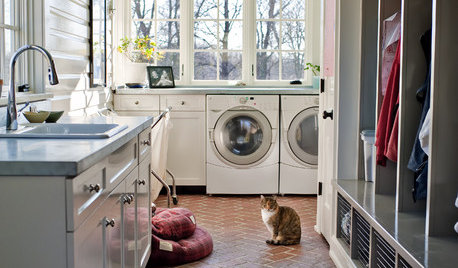Can I vent my dryer into my basement???
big_al_41
17 years ago
Featured Answer
Sort by:Oldest
Comments (16)
robertg222
17 years agofordtech
17 years agoRelated Professionals
Everett Kitchen & Bathroom Designers · West Virginia Kitchen & Bathroom Designers · Morgan Hill Kitchen & Bathroom Remodelers · Oakland Park Cabinets & Cabinetry · Corona Custom Closet Designers · Miami Custom Closet Designers · Bloomington Flooring Contractors · Bridgewater Flooring Contractors · Leland Flooring Contractors · New Orleans Flooring Contractors · Roselle Flooring Contractors · Tucson Flooring Contractors · West Haven Flooring Contractors · Atascocita Flooring Contractors · University Park Flooring Contractorsbig_al_41
17 years agobob_brown
17 years agojakkom
17 years agopkguy
17 years agolazypup
17 years agorobertg222
17 years agohandyal
17 years agoUser
17 years agodgmarie
17 years agomarkgro
15 years agothebikegeek
15 years agomike21162
15 years agocwisinski81_yahoo_com
13 years ago
Related Stories

LAUNDRY ROOMSThe Cure for Houzz Envy: Laundry Room Touches Anyone Can Do
Make fluffing and folding more enjoyable by borrowing these ideas from beautifully designed laundry rooms
Full Story
HOUSEKEEPINGCan-Do Cleaning Strategies for Busy People
While you dream of having a maid (to go with the cook and chauffer), this simplified cleaning routine can keep your real-world home tidy
Full Story
LIFEWe Can Work It Out: Living (and Cleaning) Together
Run a household without fussing and fighting with these ideas for how to work together on household chores
Full Story
HOUSEKEEPINGAnother Independence Day: When Kids Can Do Their Laundry
Set yourself free and give your child a valuable life skill at the same time
Full Story
LIFEHow Your Landscaping Can Keep Burglars Away
Prevent home break-ins with strategic landscaping and good practices instead of menacing — and maybe less effective — measures
Full Story
MUDROOMSThe Cure for Houzz Envy: Mudroom Touches Anyone Can Do
Make a utilitarian mudroom snazzier and better organized with these cheap and easy ideas
Full Story
MOST POPULAR9 Real Ways You Can Help After a House Fire
Suggestions from someone who lost her home to fire — and experienced the staggering generosity of community
Full Story
REMODELING GUIDESContractor Tips: Advice for Laundry Room Design
Thinking ahead when installing or moving a washer and dryer can prevent frustration and damage down the road
Full Story
PETS5 Finishes Pets and Kids Can’t Destroy — and 5 to Avoid
Save your sanity and your decorating budget by choosing materials and surfaces that can stand up to abuse
Full Story
KITCHEN DESIGNTrending Now: 25 Kitchen Photos Houzzers Can’t Get Enough Of
Use the kitchens that have been added to the most ideabooks in the last few months to inspire your dream project
Full Story







asolo